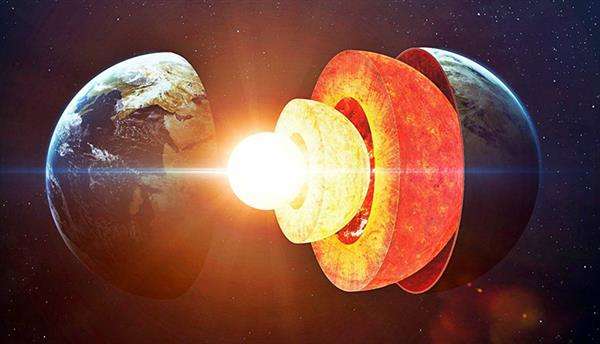Unveiling the Magic of Clash Royale: A Fresh Take on Mobile Gaming!
Is There a Vacuum of Casual Games for Female in South Korea? Cookie Run Is Next Only to Lineage, Ranking No.3 in Revenue
Insuring Your Peace of Mind: An Overview of Common Types of Insurance.
Launched 3 years ago, "Pokemon Go" is still going strong!
How to Download and Install VIX for Free?
How Could Fall Guys Continue Its Success after Selling More than 11 Million Copies on Steam?
New research has found that the solid inner core at the centre of the Earth is only a billion years old.
The modern Earth is like a layer cake, with a solid crust at its outermost layer, and a hot, slimy mantle, a liquid outer core, and finally a solid inner core. As the molten iron in the core cools down and crystallizes, the solid inner core grows slowly. This process helps to increase the agitation of the liquid outer core, creating a magnetic field that envelops the earth and protects plants from harmful cosmic rays.

In other words, the inner core is particularly important.
But we do not know much about the history of the diameter of a 2442-kilometer iron ball. We estimate its age range from 500 million to more than 4 billion years old, about the same age as the earth at 4.5 billion years old. Now, researchers have used two diamonds to squeeze an exceedingly small piece of iron and then run a laser at it. The result is a new estimate, between 1 billion and 1.3 billion years-a time range that matches a measurable increase in the earth’s magnetic field that occurred around the same time.
Jung-fu Lin, an earth scientist from Texas University said, “Earth is unique in the solar system because it has a magnetic field and is habitable, and ultimately our results can be used to study why other planets in the solar system don’t have magnetic fields.”
Geodynamo
The earth’s magnetic field is maintained by what scientists call the “geodynamo”. The movement of the iron-rich outer core turns the entire planet into a giant magnet. Thanks to the geodynamo, the earth has its poles and an invisible magnetic shield that deflects, and traps charged particles from the sun. Without a magnetic field, these charged particles would slowly strip the Earth’s atmosphere.
Part of the inner core’s motion is powered by heat, its thermal energy. As the earth’s core cools, it crystallizes from the inside. The energy released by this crystallization can be used to further power the outer core, which is still liquid. Lin said, the energy released by crystallization is called the component energy source of the geodynamo.
Lin and his team wanted to use experimental evidence to find out the energy in each of these sources. Knowing the energy data, they were able to estimate the age of the inner core.
To do this, the researchers created conditions in the core on a small scale. They heated a sheet of iron which is just six microns thick (about the length of a red blood cell) to 2727 degrees Celsius, then squeezed the sheet with two diamonds to mimic the extreme pressure inside the earth’s core. Then they measured the electrical conductivity of the sheet iron under these conditions.
The young core
This conductivity data allowed the researchers to calculate the amount of heat-cooling energy in the core that could be used by a generator. They found that the geodynamo draws about 10 terawatts of energy from the cooled core -- a little more than one fifth of the heat dissipating through the earth’s surface into space.

Lin said, once the loss of energy has been calculated, the researchers can calculate the age of the earth’s inner core. Getting to know the rate of energy loss, researchers can calculate how long it took to get from a blob of molten iron to a solid core the same size as it is today.
Lin said, “the result with the 1 billion-1.3 billion-year-old age suggests that the earth core is “actually relatively young.”
This age of estimate is no younger than other estimated ages, such as a study published in Nature in 2016, which used similar methods to find the core just 70 million years old. Lin says the new experiment uses more reliable methods to deal with the pressures and temperatures generated in the core, making that younger estimate less likely.
According to a study in “Nature” in 2015, ancient lodestones reveal that earth’s magnetic field suddenly strengthened 1.5 billion or 1 billion years ago. Our new estimates are also consistent with this evidence, Lin says, because crystallization in the inner core “strengthens” the magnetic field.
Lin says, questions remain about the way heat moves around the earth’s core. Unlike the samples they tested, the core is not full of iron -- it also contains the lighter elements carbon, hydrogen, oxygen, silicon, and sulphur. However, the proportion of these light elements is unknown, so it is difficult to know how they change the conductivity of the inner core. That is what Lin and his team are currently working on.
Lin says, “We are trying to understand how the existence of these light elements affects iron’s heat-conducting materials under high pressures and temperatures.

PayPal Q3 transactions hit record total: $247 billion

Supercell‘s sixth mobile game "Rush Wars" is now in beta

Is There a Vacuum of Casual Games for Female in South Korea? Cookie Run Is Next Only to Lineage, Ranking No.3 in Revenue

Top 10 Game Developers of 2020 (I)